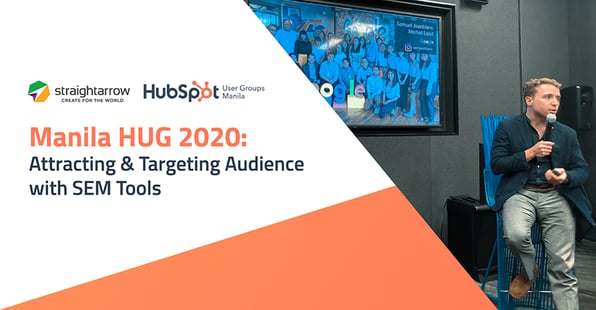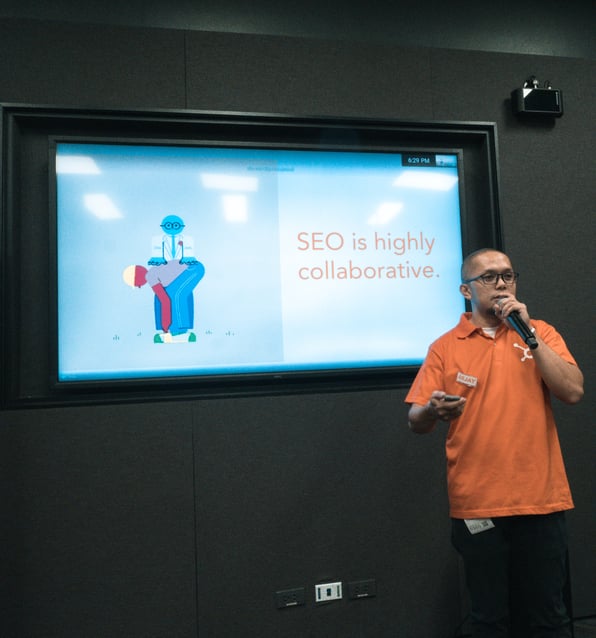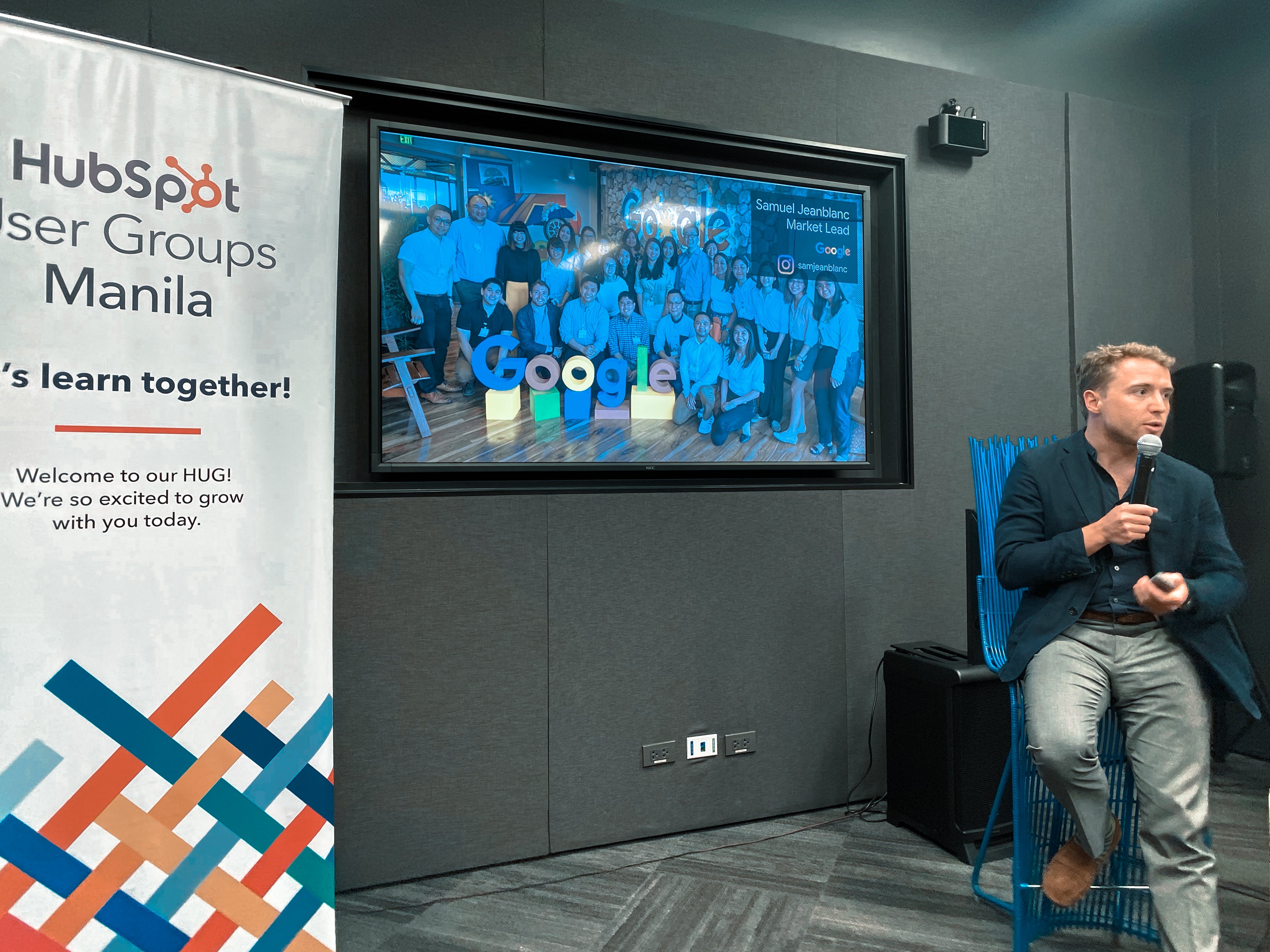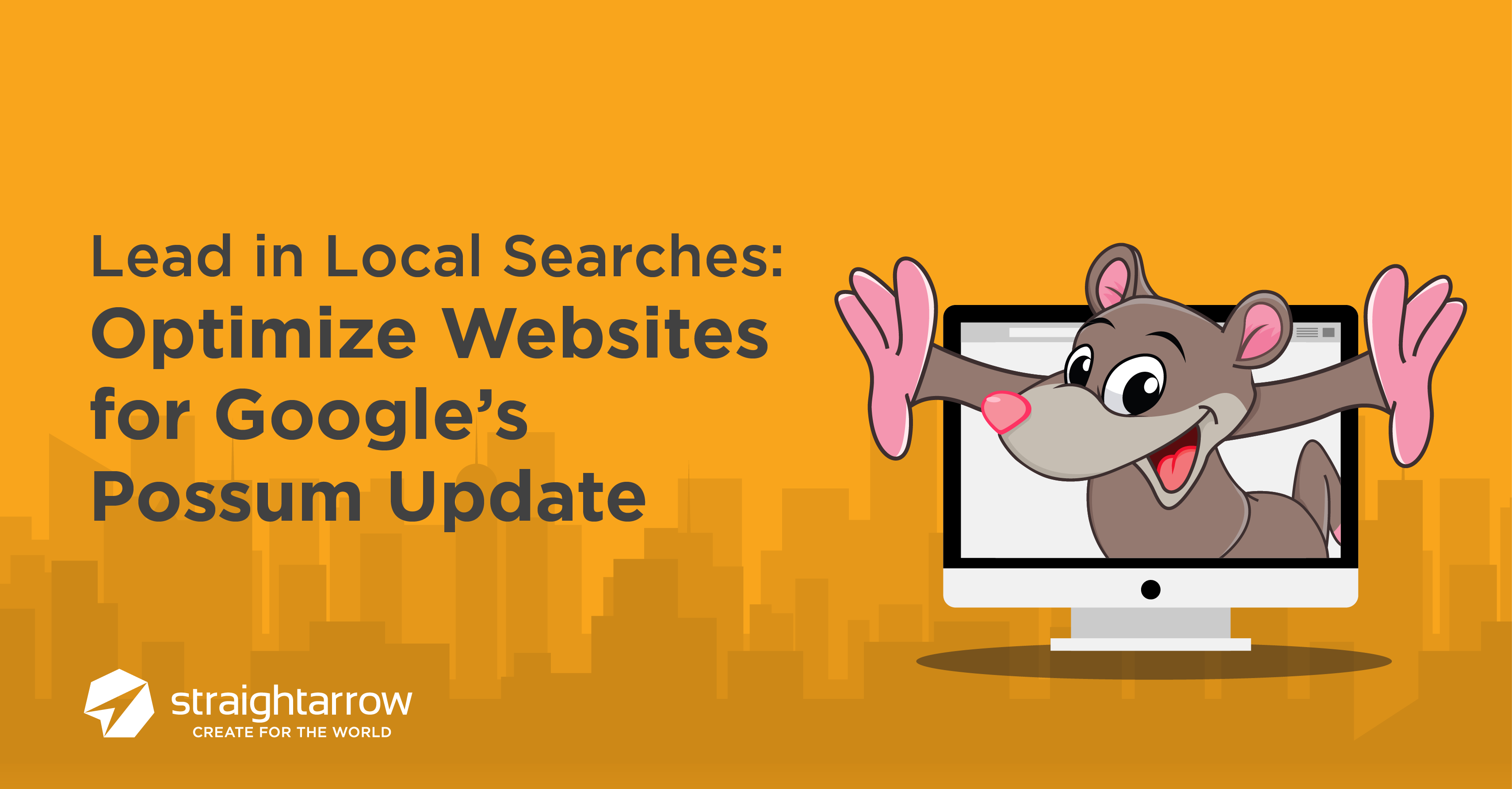How to Attract & Target Audience with SEM Tools?

The start of the new decade has brought on both challenges and opportunities on a global scale. For instance, the “new normal” forced people to limit physical movements, giving way to the rise of online transactions. Consequently, the online consumer market has grown significantly, while the competition for eCommerce businesses has been tighter.
Fortunately, the Manila HubSpot User Group (HUG) got a headstart on how to get found online amidst the fierce competition as the first meetup of 2020, held at Google Philippines last March 5, focused on attracting and targeting audiences using search engine marketing (SEM) tools.
Unless this crisis has naturally created opportunities for your business, you need to implement a business emergency plan—switch to survival mode.
If you don’t know where to start to protect your business from the challenges brought about by the pandemic, please consider these steps:
How SEO Fits in Your Marketing Strategy
As established in the past HUG gatherings, marketing is no longer linear. The customer is no longer an endpoint but the core focus of marketing strategies as they provide the momentum for the business. Thus, we said goodbye to the funnel and welcomed the flywheel model.
Manila HUG leader Chloe Villanueva started the first 2020 Manila HUG by giving a quick refresher on the flywheel and how SEM fits in this strategy. She said that the topic is part of the flywheel's attract and delight stages, and she gave a clear example of how search engine optimization works, sharing the case of one of StraightArrow’s clients.

At the start of their engagement with StraightArrow, D&V Philippines, a provider of outsourced financial and accounting services, had four main issues:
- low location-based traffic vs. high overall traffic
- low visitor conversion rate
- outdated website content, and
- the introduction of voice search.
To solve the issue, StraightArrow identified that we needed to optimize their past and future content as we gained a better understanding of what locations their best customers were from and what their pain points were.
From there, StraightArrow set up a process flow that incorporated HubSpot’s search engine optimization (SEO) tools, the skills of the company’s SEO Specialist and Lead Conversion experts, and the skills of D&V’s content writers. By the end of the engagement, D&V and StraightArrow could increase the client’s traffic from their target locations and get them to an average of 20 new leads per month.
How to do SEM with Hubspot and Google Tools
After Chloe’s remarks, one of StraightArrow’s Digital Marketing Team Leads and SEO experts, Arjay Fabregas, took the floor to give HUGgers practical steps to achieve similar results as D&V using HubSpot and Google’s SEM tools.

StraightArrow Digital Marketing Team Lead and SEO Specialists Arjay Fabregas talk about doing SEO using HubSpot tools. Photo by Angelica Perez.
Arjay started his discussion by emphasizing how important collaboration is in SEO, as it is just one piece of the puzzle of running a successful digital marketing campaign.
To make SEO work, you’ll need web development for a seamless website user experience, engaging and creative design, optimized content, and of course, an arsenal of SEM tools that you can use for the following purposes:
1) Optimizing your website
The first step to attracting and delighting your audiences is optimizing where they will be led to—for example, your website. HubSpot has an SEO tool that can give you a list of recommendations for optimization. The tool identifies points for improvement such as titles, descriptions, and duplicate issues.
To access HubSpot’s in-portal SEO recommendations, just click Marketing on the navigation bar, hover your mouse over Planning and Strategy then go to SEO. Once you’re there, the Recommendations tool will scan your entire domain and its associated domains.
After the scan, select a domain and view the recommendations.
Arjay also shared a tip for those who want to do a quick audit on a client or competitor’s website. The good news is that you can analyze other domains hosted outside HubSpot by clicking the Add URL button.
Then, you can also get SEO recommendations for specific pages or blog posts by navigating to the post or page’s Content Editor.
- Go to Optimization Settings and click the Optimize icon in the left sidebar menu.
- You can view suggestions to improve your content, title, links, meta description, images, and header.
2) Attributing performance
Once you’re done optimizing the pages in HubSpot, it’s time to review its performance. Arjay shared that you can do this through the Analytics tool.
There are several metrics to look into using the Analytics tool. Traffic analytics shows organic, direct, email, direct traffic, and social media data. This helps you understand which channels are contributing well to driving traffic to your website.
Another attribution could be offline sources, which can include conferences, events, and meetups such as the HUG gathering, seminars, etc.
3) Running adaptive tests
Now that you’ve optimized and analyzed the data, there are some cases where you can identify many possible ways to improve your campaign. This is where adaptive tests come in.
Adaptive testing is a more complex process than A/B testing. It uses machine learning to distribute website traffic to high-performing variations dynamically and allocates traffic from underperforming variations.
Through adaptive testing, you can simultaneously create variations of your page and assign the traffic to the high-performing ones. This can quickly be done through HubSpot CMS if you have a Marketing Hub Enterprise account.
To get more data that you can bank on for your adaptive tests, Arjay shared that you can enable Google Search Console on HubSpot by looking up the said app on the Marketplace.
Google Search Console is a free tool by Google that helps you monitor, maintain, and troubleshoot your site’s presence in Google Search results.
Once you’ve enabled Google Search Console on HubSpot, you’ll see your page’s Average Position, Total Impressions, Average Click-through Rate, top search query, and Clicks. Then, you can adjust your metadata accordingly.
4) Tracking behaviors for Custom Events
For HubSpot Enterprise subscribers, Arjay shared that you can also use Custom Events to implement marketing actions based on the user’s behaviors on your website or in your software.
This feature is complementary to Custom Events on Google.
How to Maximize Customer Data for SEM
After Arjay’s detailed and insightful talk, Google Philippines’ Market Lead Sam Jeanblanc took the floor to discuss the changes in consumer behavior, the wealth of data, and its implications on search engine marketing.
Sam started his talk by helping the attendees understand today’s consumer behavior, sharing that the growth of mobile has triggered the emergence of new conduct where customers go online to help them make their decisions. Not only that, but they’ve also become more curious, want to know everything, and search for every detail before making a purchase.
Aside from that, consumers have also become more demanding. For instance, Sam shared that ten years ago, a student would go to Google and search for “best credit cards for students.” Now, they expect Google to have so much data about them that there is an abundance of “near me” queries.
In the case of the student, they would no longer search for “best credit card for students” but instead put the keywords “best credit card near me.”
And finally, Sam shared that consumers have become more impatient. He gave ride-hailing service Grab as an example. The consumer will cancel if the car is more than five minutes away. In the same way, if your website is too slow, there’s a high possibility that a visitor will leave.
Thus, he gave this advice to those who are looking to optimize their website:
“If you’re not looking at speed, if you’re not looking at clarity on your website as a key factor, then you’re probably losing it. It’s very, very, very important to remain simple and fast.”
 Google’s Market Lead, Sam Jeanblanc, talks about how to maximize consumer data for SEM. Photo by Harlie Abejuela.
Google’s Market Lead, Sam Jeanblanc, talks about how to maximize consumer data for SEM. Photo by Harlie Abejuela.
Finally, Sam discussed that since we have more data than ever on consumers and their behaviors, SEO is becoming more important to give them tailored results. But if a business wants to succeed, paid ads or search engine marketing should be utilized.
“ If you don’t have a strong SEM strategy, you’re probably not capturing all the opportunity that’s available.”
And so, Sam went on to share some practical tips to leverage data so you can create a targeted SEM strategy.
1) Segment your data
With so much data available, you’ll need to segment them using CRM databases such as HubSpot and analyze their activity.
- Who among them has been visiting your website many times now?
- Who made it to the pricing page?
If you look into these kinds of data, you can re-engage your prospects on different, more valuable touchpoints.
2) Leverage remarketing
Sam explained that remarketing is basically putting a pixel on your website visitors, then re-engaging them through digital ads. The easiest way to visualize this is when you go to an eCommerce shop and look at a beautiful pair of shoes. After leaving the online store, you’ll see that pair of shoes through ads.
Sam presented remarketing as one of the most effective tactics, with conversion costs almost halved and conversion rates for retargeted users 30% higher than audiences coming to your website for the first time.
3) Customer match strategy
Once you have a remarketing strategy, you can opt to go deeper and employ a customer match strategy. This involves targeting similar audiences to those previously engaged with or purchased from your website. Facebook has a similar feature called Lookalike audiences.
Sam said this is a powerful strategy since it uses the available data to target those with a higher potential to buy or avail of your service.
#GrowBetter with SEO and SEM
When combined, organic SEO and paid SEM are powerful strategies that can help you target consumers without being intrusive. At the same time, with proper targeting, you can assist your target audiences in finding the best solution or product they are looking for.
That’s what inbound is all about: helping and delighting consumers while attracting them to your business.
Do you need help with creating a solid SEM strategy?
We’re here to help. Get in touch with us today.








Comments